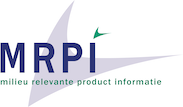Process information
| Key Data Set Information | |
| Location | RER |
| Geographical representativeness description | plants in Hodonice, Czech Republic (62%) and Hornstein, Austria (38%) |
| Reference year | 2020 |
| Name |
|
| General comment on data set | Glass fibre wallcoverings are finished fabrics produced from glass fibre yarns and glass voluminized (textured) and textured yarns. Scope and type: The type of this EPD is "cradle-to-gate" EPD with options. This EPD declares the life cycle analysis LCA for a specific product.The software GaBi ts is used to perform the LCA. The background database used is Ecoinvent v3.4. The following life cycle stages are considered: - Production A1- A3 - Raw material supply, transport and manufacturing; - Installation A4 - Transport to building site, A5 - Initial installation into building including packaging waste processing and additional material for installation; - End-of-life C2 - Transport to waste processing, C4 - Disposal landfilling; - Benefits and loads beyond the product system boundary. Representativeness: This EPD declares as specific product ADFORS Novelio®glass fibre wallcovering produced by SAINT-GOBAIN ADFORS CZ s.r.o in two manufacturer™s plants Hodonice, Czech Republic 62% and Hornstein, Austria 38%. The EPD covers ADFORS Novelio®glass fibre wallcovering. Starting point for this EPD is ADFORS Novelio® T1013. The other products differ less than 1%. Calculation rules: NULL Scenarios and additional technical information: A1. Raw materials supply This module considers the extraction and processing of all raw materials and energy which occur upstream to the Novelio® manufacturing process, as well as waste processing up to the end-of waste state. A2. Transport of raw materials to manufacturer This includes the transport distance of the raw materials to the manufacturing facility Hodonice, Czech Republic and Hornstein, Austria via road weighted truck transport: 0,18 kg input material, average distance of 203 km. A3. Manufacturing This module covers the manufacturing of ADFORS Novelio®glass fibre wallcovering and includes all processes linked to production including packaging and internal transportation. Use of electricity, fuels and auxiliary materials is taken into account as well. A4. Transport to the construction site The average transport distance to the construction site for ADFORS Novelio®glass fibre wallcovering is 900 km truck transport: product incl. packaging 0,19 kg, 900 km. A5. Application and use This module includes the environmental aspects and impacts associated with the application of the wallpaper. ADFORS Novelio®glass fibre wallcovering is a paintable fibreglass wall covering applicated with vinyl glue on walls inside buildings. For the installation the vinyl glue 0,2 kg/m² is declared in this study. As paint the standard is 2 layers of acrylic paint. Paint and cutting losses are not declared. C2. Transport to End of life This module includes transportation distance to landfill truck transport: 0,16 kg, 50 km. C4. Disposal As only one end-of-life scenario landfilling is considered for ADFORS Novelio®glass fibre wallcovering of SAINT-GOBAIN ADFORS CZ s.r.o. Declaration of SVHC: None of the substances contained in the product are listed in the fiCandidate List of Substances of Very High Concern for authorisationfl, or they do not exceed the threshold with the European Chemicals Agency. More information: www.adfors.com |
| Copyright | Yes |
| Owner of data set | |
| Quantitative reference | |
| Reference flow(s) |
|
| Time representativeness | |
| Data set valid until | 2025 |
| Time representativeness description | valid from (donderdag 18 juni 2020) through (woensdag 18 juni 2025) |
| Technological representativeness | |
| Technology description including background system | Glass fibre wallcoverings are finished fabrics produced from glass fibre yarns and glass voluminized textured and textured yarns. Wallcoverings are delivered with surface finishing in white colour standard, with white pigment, preglued easy glue or with final coloured finishing. Products are typically glued on the wall and painted afterwards. Standard ones need to be painted twice, pigmented once and finalized ones do not require any painting but can be repainted if necessary. Glass fibres are produced by melting of input materials followed by drawing and coiling. E Eutal type glass is used for the purpose of mesh fabric production. Next is glass-fibre weaving, where "greige fabrics" is produced. Different weave methods are used for fabric production. Last step is the hardening process, in which a finishing layer is applied to the greige fabric. The product complies with /EN 15102:2007+A1:2011/ and has the declaration of performance DOP Œ 2 Œ Glass Fibre Wall Covering Œ 03 issued on 28/2/2018. ADFORS Novelio® is applied on internal walls. If well maintained, there is no lifetime limitation. Product can be repainted several times without losing its performance. COMPONENT > 1% [kg / %] glass fibre organic 0.13 organic coating 0.03 * > 1% of total mass |
Modelling and validation
| Subtype | average dataset | ||||
| Data sources, treatment and representativeness | |||||
| Data source(s) used for this data set | |||||
| Completeness | |||||
| Validation | |||||
| |||||
| Compliance Declarations | |||||
| Compliance |
Compliance system name
|
Approval of overall compliance
|
Nomenclature compliance
|
Methodological compliance
|
Review compliance
|
Documentation compliance
|
Quality compliance
|
| Compliance |
Compliance system name
|
Approval of overall compliance
|
Nomenclature compliance
|
Methodological compliance
|
Review compliance
|
Documentation compliance
|
Quality compliance
|
Administrative information
| Data generator | |
| Data set generator / modeller | |
| Data entry by | |
| Time stamp (last saved) | 2021-02-03T11:58:50.710827 |
| Data set format(s) | |
| Publication and ownership | |
| UUID | 79e6e0b6-2ca7-4a69-a56c-dbbda14fef35 |
| Data set version | 04.01.000 |
| Registration authority | |
| Registration number | 1.1.00133.2020 |
| Owner of data set | |
| Copyright | Yes |
| License type | Free of charge for all users and uses |
Environmental indicators
Indicators of life cycle
